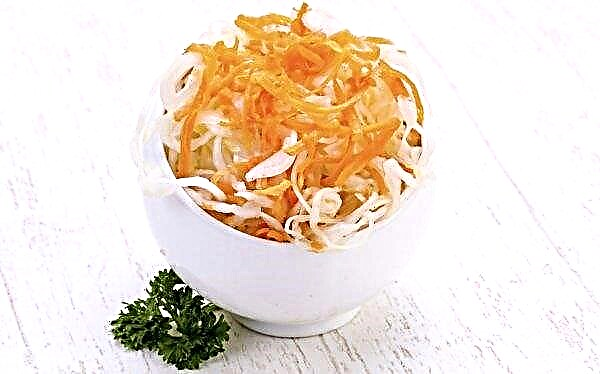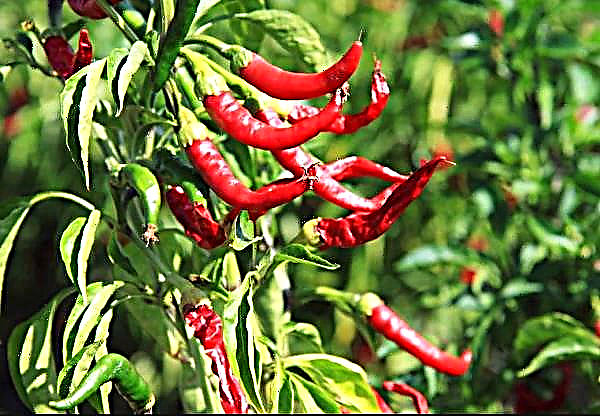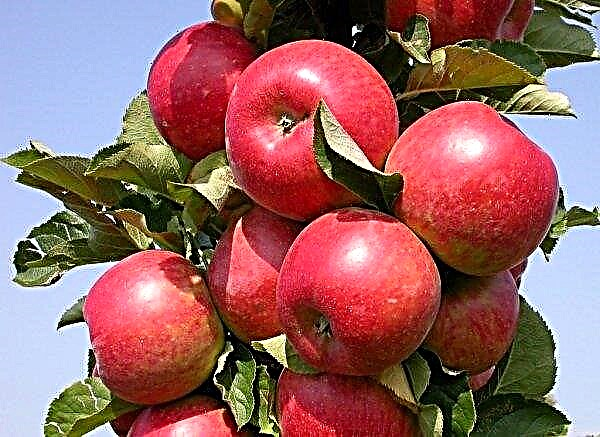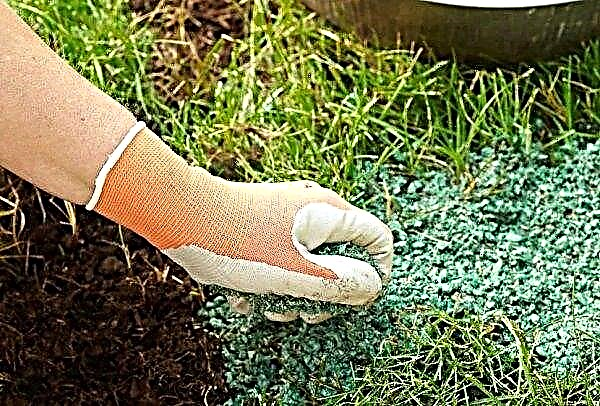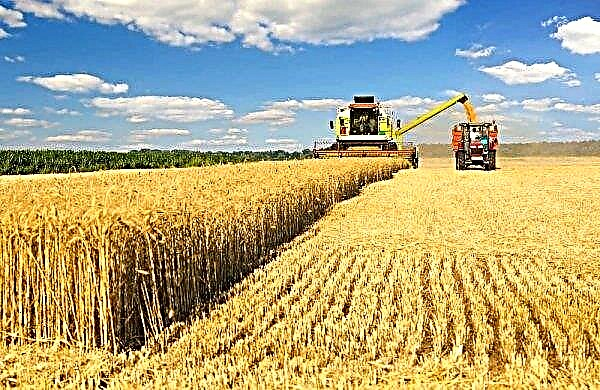Among the many varieties of cabbage, those that are resistant to fungal diseases deserve special attention. One of them is a late-ripening variety of Blizzard. Learn more about its features and agricultural technology from the article.
History of Variety Breeding
Blizzard - a classic representative of medium-late varieties of cabbage. Attractive rounded heads weigh about 3 kg and are distinguished by excellent taste. The variety was introduced for study by the Federal Scientific Center for Vegetable Production in 1983. He was included in the State Register in 1989 and has since earned the well-deserved attention of gardeners. Zoned for the Central regions of Russia, as well as Siberia.
Description and characteristic
Heads of the Blizzard variety are characterized by a commodity appearance, good keeping quality and transportability. They are suitable for growing on household plots and on large farms.
Did you know? According to one of the Greek legends, cabbage arose from the tears of the Thracian king, punished by the god of winemaking Dionysus for the fact that he refused to recognize him as a deity. Therefore, the Greek cabbage — symbol of sobriety.
The basic characteristics of the variety:
- leaf outlet: large, vertical;
- head: rounded, dense, light green;
- leaves: medium-sized, rounded, with a slightly wavy edge and waxing;
- weight: 1.8–3.3 kg;
- diameter: medium, 15-17 cm;
- texture: dense, crispy;
- taste: sweetish;
- tolerance / resistance: the variety is resistant to necrosis, fusariosis, diseases of the root system; also resistant to cracking;
- ripening period: 130–140 days;
- palatability: high;
- productivity: 508–673 kg / ha.

Appearance of cabbage
Classic white cabbage is a stalk on which the head is formed. Around it are folded leaves of a rosette and form a head. The leaves of the blizzard rosette rise vertically, which distinguishes this variety from others. Waxing on them is not too intense, there is an average number of veins.
Frost resistance
The variety was bred for Siberia and is one of the most frost-resistant. But given the growing season of cabbage, you need to pay attention to the duration of the summer. If it is short in the region, it is preferable to grow medium-late varieties in greenhouses and apply the seedling method of planting.
Taste qualities
The variety is universal, can be used fresh and is suitable for all types of workpieces. Its juicy leaves contain 4.8–5 g of sugar per 100 g of leaves. It is believed that the leaves of this variety are more juicy and are better suited for salads and pickles.
Ripening dates and productivity
Blizzard is a mid-late variety. Her head of cabbage fully ripens for 140 days, reaching its maximum weight. Some sources also indicate an interval of 130 to 150 days. It can be assumed that weather conditions influence ripening in this way. Cut off the heads for eating begin already on the 60th day, and in order to store - wait until fully ripened.
Did you know? Archaeological sites show that people have been consuming cabbage for over 5,000 years.
The yield declared by the originator is 508–673 kg / ha. It can be described as average. This indicator is greatly influenced by soil fertility and timely watering.
Decent qualities and possible disadvantages of the variety
- Advantages of the Blizzard variety:
- stable yield;
- excellent taste and juiciness;
- frost resistance;
- good keeping quality;
- excellent presentation of heads of cabbage, which does not deteriorate during transportation;
- resistance to cracking;
- disease resistance;
- The longest shelf life among varieties.
- Among the shortcomings are noted:
- large stump;
- long ripening period: in spite of frost resistance, the ripening period of more than 130 days is a rather large gap for the northern regions with a short summer.

Growing seedlings
To get a good harvest, you need to start with quality seedlings. Then provide plants with optimal conditions for growth and development. Seedlings will reduce the time spent cabbage on the site and get the crop earlier.
Seeding time
Preplant planting consists of preparing seeds, soil and containers. Plan a planting in April to plant the finished plants on the site in May. Seedling growing period: 30–35 days. During this time, 3-5 real leaves should form on the plants. If the seeds are sown immediately in the ground, then this can be done no earlier than April 25.
Important! The head of cabbage (stump) retains the bulk of nitrates when processing crops from diseases and pests. Therefore, the head of cabbage must be thrown away, and only leaves are used for food.
Seed preparation
Basic actions with seeds:
- calibration
- disinfection;
- germination.
Calibration is the process of selecting large germinating seeds. Soak them in 5% sodium chloride solution for 5 minutes. Those that will not sprout will emerge. And the rest are suitable for landing. Also keep in mind that the larger the seed, the greater the potential for development. Therefore, small seeds can also be rejected. Calibration of seeds. Since fungal spores are not visible to the naked eye, the seeds are treated with a pale pink solution of potassium permanganate. This procedure disinfects seeds and protects seedlings from pathogen damage. Some farmers treat seed with a growth stimulant. Many of them also increase the immunity of plants and disinfect.
Calibration of seeds. Since fungal spores are not visible to the naked eye, the seeds are treated with a pale pink solution of potassium permanganate. This procedure disinfects seeds and protects seedlings from pathogen damage. Some farmers treat seed with a growth stimulant. Many of them also increase the immunity of plants and disinfect.
The stimulator guarantees the friendly development of cabbage and disease resistance. To speed up germination, seeds germinate. To do this, they are laid on a saucer and covered with a damp cloth. At room temperature, they should germinate after 3-4 days. Sprouting cabbage seeds.
Sprouting cabbage seeds.
Preparation of soil for seedlings
You can plant seeds in peat cups or peat tablets. Peat tablets are peat packed in a net. It serves as soil and additional fertilizer. The tablet is moistened with water, the seed is deepened in it and the tablets are placed in a plastic container. If you cover it with a film, then the temperature inside will be higher and this will accelerate the germination.
Seedlings in peat tablets immediately grows in a nutrient medium. When transplanted into the ground - it is not removed from the medium, but is planted with it. Therefore, its roots are not damaged and the plant experiences less stress from transplanting.
Important! Even if the soil for seedlings is purchased in a store, it must be treated with a 3% solution of potassium permanganate to destroy spores of putrefactive bacteria.
Crop conditions and care
The conditions for good seedling growth are:
- shine;
- constant irrigation (the soil should be moist, but not wet);
- cool (temperature within +12 ... + 18 ° C).
 If seedlings were planted in peat tablets or very nutritious soil, then top dressing can be omitted. But if planting occurred in ordinary soil, then it is necessary to feed the plants. Fertilizer should include nitrogen, potassium and phosphorus in equal proportions. The first top dressing is carried out in phase 2 of real leaves, and the second - 2 weeks after the first.
If seedlings were planted in peat tablets or very nutritious soil, then top dressing can be omitted. But if planting occurred in ordinary soil, then it is necessary to feed the plants. Fertilizer should include nitrogen, potassium and phosphorus in equal proportions. The first top dressing is carried out in phase 2 of real leaves, and the second - 2 weeks after the first.Seedling hardening
Since outdoor climatic conditions do not coincide with room conditions, the seedlings are hardened. Hardened healthy seedlings are distinguished by a thick stem, well-developed 3-5 leaves. For this, plants are daily taken out into the air or left by an open window. They begin hardening 2 weeks before planting in open ground. The time spent by plants in the air is constantly increasing, starting from 20 minutes.
Did you know? It is believed that the birthplace of cabbage — The Mediterranean. Although in reality in nature there are a number of cruciferous plants claiming this role. But the researchers were unable to prove that at least one of them — real ancestor of white cabbage.
Planting seedlings in the ground
Blizzard cabbage can be planted in open ground 35–40 days after emergence. Given that the leaf rosette is quite large, plants are planted at a distance of about 50 cm from each other. Seedlings are planted in rows with distances between them from 50 to 70 cm. Such planting facilitates cabbage care: weeding, watering, fertilizing and harvesting. Before landing, you must prepare the site. There are a number of mandatory requirements for his choice.
It should be:
- sunny;
- well drained;
- with nutritious soil;
- cabbage should not have grown on it before this planting;
- the acidity level is 6–6.5 pH.
Deoxidation of acidic soil should occur in the fall. To do this, lime or dolomite flour is added to the soil during digging. Over the winter, she will provide the appropriate chemical reactions. The introduction of dry components is carried out to a depth of 10-15 cm, carefully digging the soil.
Important! The elongated seedlings can be deepened. This will reduce the trunk.
In the spring, the site is again dug up, removing weeds. If the plants in the selected area were sick with fungal diseases, then the soil is disinfected with a hot solution of copper sulfate 1% (1 tablespoon per 10 liters of water). Now it remains to make humus or rotted manure at the rate of 5-8 kg / m².
Landing technology:
- make a trench about 5 cm deep;
- water abundantly;
- place the seedlings in a trench at a distance of about 30 cm from each other;
- compact the soil around the plants and fill the trench;
- gently pour again.
 The scheme of planting cabbage.
The scheme of planting cabbage.Plant care
In the open ground, cabbage must be watered weekly, fertilized periodically, weed weed control, pest control, soil loosening, hilling. This contributes to the good development of plants and a rich harvest.
Fertilizer and Watering
The optimal watering for cabbage is drip irrigation. The system consists of a line and dropper dispensers. This is convenient, since moisture is evenly distributed along the root zone to the desired depth. In the same way, farmers fertilize seedlings.
Basic watering rules:
- Water as the soil dries.but at least 1 time per week. Seedlings in open ground are watered up to 3 times a week.
- Water should pour slowlybecause plant chooses nutrients with micro roots, which are easy to destroy by intensive watering.
- Do not create swampy roots. So they will not be able to consume nutrients, will begin to rot, and the cabbage will die.
- Do not spray leaves. Humidity increases the risk of infection with late blight and other diseases.
 7 days after planting the seedlings in a permanent place, you need to add nitrogen, phosphorus and potassium. The source of nitrogen is ammonium nitrate. It is taken 10 g. Add 10 g of potash fertilizers and 20 g of superphosphate. 3 weeks after this, top dressing is repeated. Frequency is maintained until the end of July. In July, top dressing is carried out by 2 times increasing the volume of potassium and removing nitrogen from the mixture.
7 days after planting the seedlings in a permanent place, you need to add nitrogen, phosphorus and potassium. The source of nitrogen is ammonium nitrate. It is taken 10 g. Add 10 g of potash fertilizers and 20 g of superphosphate. 3 weeks after this, top dressing is repeated. Frequency is maintained until the end of July. In July, top dressing is carried out by 2 times increasing the volume of potassium and removing nitrogen from the mixture.Did you know? The expression "find in cabbage" emerged from popular beliefs that children bring a hare - a symbol of fertility. And he chose cabbage because its leaves are wide and comfortable, like diapers.
Soil Loosening and Weed Removal
The goal of tillage is to provide the roots with a sufficient amount of nutrients. Therefore, it is loosened and weeds are periodically removed. If the plot is covered with mulch, then this is not necessary. Mulch prevents the growth of weeds and keeps the soil moist and loose. The thickness of the mulch is about 5 cm. It can be straw, sawdust and other material of organic or inorganic origin.
Pest and Disease Control
With the right site and conditions for growth, cabbage plants will be strong enough to successfully resist pests and diseases. If the weather is unfavorable, fungal diseases can be activated. Viruses are almost always carried by insects, so they can occur at any time.
Fungal diseases at the prophylaxis stage are treated by spraying with copper-based solutions. It can be a 1% solution of Bordeaux fluid or copper sulfate. When the leaves are moistened with dew in the morning, copper ions are activated and neutralize pathogens. But if the leaf is damaged by insects, then the fungi easily penetrate inside. Therefore, it is recommended that plants be treated before signs of disease appear. Processing of planting material with biofungicides, for example, Zircon, also shows itself well. It not only strengthens the plant's immunity, but also makes it less susceptible to pathogens.
Processing of planting material with biofungicides, for example, Zircon, also shows itself well. It not only strengthens the plant's immunity, but also makes it less susceptible to pathogens.Among other means of combating diseases:
- crop rotation compliance;
- weed removal;
- the destruction of pests;
- planting disease-resistant varieties, such as Blizzards.
Significant harm to cabbage is caused by insects. Some of them are carriers of viruses. They also create conditions for the development of pathogenic microflora. For example, the sticky coating that leaves aphids is an excellent medium for the development of sooty fungi.
Pest control methods depend on the type of pest:
- Butterflies - the source of the emergence of larvae (caterpillars). In order to prevent them from landing on plants, it is recommended to pull a net over the cabbage. This is especially true in late May and early June, when the butterfly breeding season occurs.
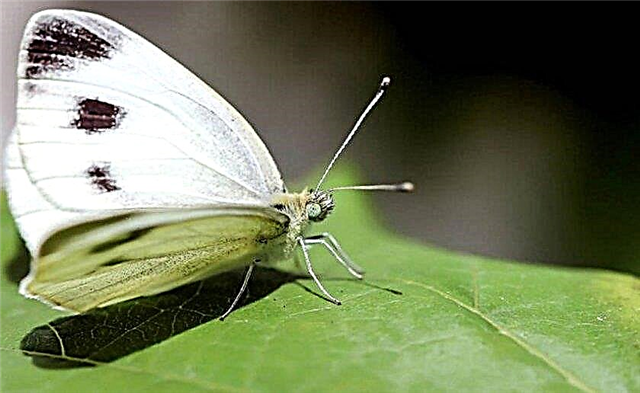
- From slugs, who also love leaves, aisles sprinkled with small gravel or shell rock. Slugs cannot overcome such a barrier.
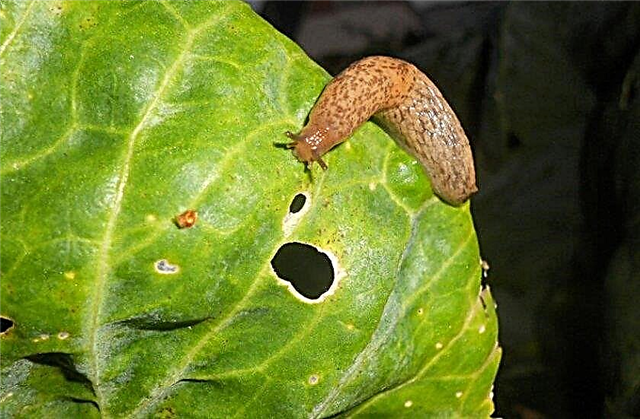
- From cabbage flea Saves soil moisture. They attack crops only on dry soil.

Birds also help reduce pest populations in your area. To attract them - hang feeders in the winter and in the summer in your garden there will be much more birds.
For those who prefer to control pests with industrial drugs, there is a wide range of insecticides:
- "Karbofos" - for aphids;
- "Fitofrerm" - for tracks;
- "Thiophos" - for a cabbage fly.
Important! Do not exceed the doses indicated on the packaging of chemicals. Even if the drug is low toxic, it is not useful to humans. Also do not eat vegetables that are processed less than 3 weeks ago.
Harvesting and storage
The peculiarity of the Blizzard variety is that its heads can be stored for up to 8 months. This is longer than other varieties. And they are more resistant to diseases that occur under improper storage conditions. The crop ripens 130–140 days after emergence. Harvesting cabbage takes place in dry weather. Do not wait for frost. The minimum allowable temperature on the day of harvest is +5 ... + 7 ° C. The stump is cut with a sharp knife, leaving a height of 8-12 cm. Stacked in boxes or boxes with good ventilation. The air temperature in the room should be from 0 ° С to + 5 ° С, humidity - 90–95%. Variety Blizzard deserves attention for its taste and marketability. A long shelf life, good shelf life, disease resistance and unpretentiousness are additional arguments for growing this variety on the site.
Stacked in boxes or boxes with good ventilation. The air temperature in the room should be from 0 ° С to + 5 ° С, humidity - 90–95%. Variety Blizzard deserves attention for its taste and marketability. A long shelf life, good shelf life, disease resistance and unpretentiousness are additional arguments for growing this variety on the site.






